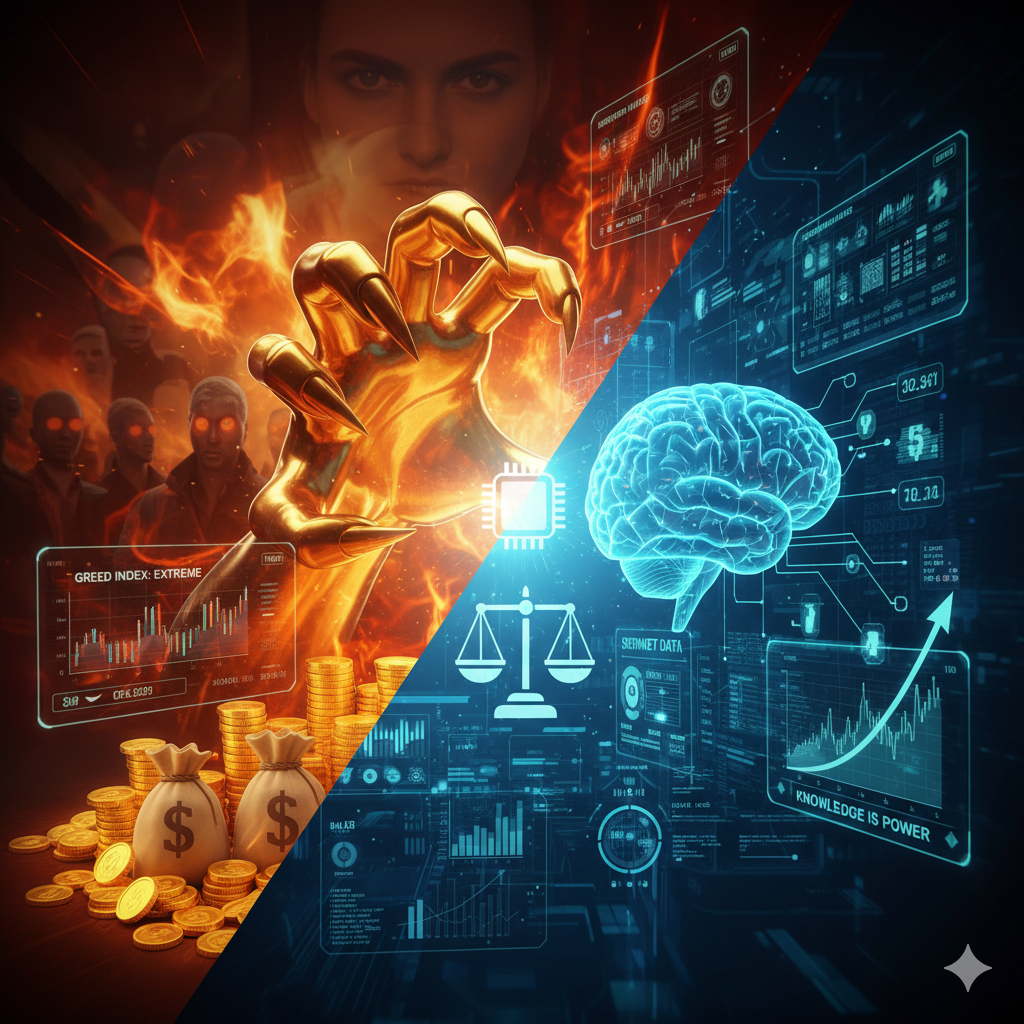“Without desire, there is no motion; without knowledge, there is no direction.”
🧩 Greedy Algorithms
A greedy algorithm makes the locally optimal choice at each step, hoping that a sequence of small wins will yield the best overall result.
It doesn’t plan ahead or reconsider — it grabs the best option now.
Example
If you’re making £1 using the fewest coins, a greedy algorithm takes the largest coin first (50p, then 20p, etc.).
That works in currencies like GBP, but fails in irregular systems — proving that greed is efficient only when the structure supports it.
Key traits:
- Simple and fast.
- Works when local optimum = global optimum.
- Fails when short-term gain undermines long-term efficiency.
⚙️ Non-Greedy Algorithms
Non-greedy (or dynamic, reflective) algorithms evaluate future outcomes before making a move.
They understand that the best path may not appear best immediately.
Example
Dynamic programming stores partial results, revisits choices, and finds the global optimum — a path of strategy over impulse.
In human terms:
A greedy algorithm is a day trader chasing hype.
A non-greedy one is Warren Buffett, patient and data-driven.
💰 The Role of Greed in the Stock Market
Greed is the engine of motion in markets.
It’s not evil — it’s the primal force behind risk-taking, innovation, and speculation.
- Greed fuels bull runs as investors chase momentum.
- Greed inflates bubbles as logic yields to FOMO.
- Greed collapses into fear when optimism reverses.
“Be fearful when others are greedy, and greedy when others are fearful.” — Warren Buffett
Greed, then, is the accelerator of capitalism.
But without information as the steering wheel, it drives off the cliff.
🧠 Human Sentiments
Sentiment is the emotional undercurrent of human decision-making — the invisible hand behind every “rational” trade.
Markets don’t move on logic alone; they move on collective mood:
- Optimism → Buying
- Pessimism → Selling
- Euphoria → Bubbles
- Panic → Crashes
The stock market is not a machine of numbers; it’s a machine of emotion quantified.
📊 Sentiment Analysis in the Stock Market
Sentiment analysis uses Natural Language Processing (NLP) and machine learning to translate emotion into data.
Process:
- Data Collection: Gather social media posts, financial news, earnings reports.
- Text Analysis: Detect positive, negative, or neutral tones.
- Scoring: Assign polarity values to phrases.
- Aggregation: Summarize the overall market mood.
Example
If online chatter about “Tesla” turns strongly positive, algorithms may preemptively buy, anticipating human optimism.
Here, information becomes a form of refined greed — quantifying emotion for strategic gain.
⚖️ The Debate: Greed vs Information
Your debate with your friend — Is the key to making money greed or information? — is a paradox of energy vs. direction.
| Factor | Nature | Strength | Weakness |
|---|---|---|---|
| Greed | Emotional energy | Drives risk-taking and ambition | Can become impulsive and self-destructive |
| Information | Cognitive direction | Enables strategy, precision, timing | Can lead to paralysis or over-analysis |
🧠 The Synthesis
- Greed is the fuel.
It gives energy, hunger, and motion. - Information is the steering.
It gives focus, awareness, and control. - Discipline is the braking system.
It prevents over-correction and burnout.
Wealth = Greed × Information × Discipline
Without greed, information is inert.
Without information, greed is blind.
Without discipline, both self-destruct.
🪶 Reflective Summary
Greed is the human algorithm that says, “I want.”
Information is the intelligent refinement that asks, “How, when, and why?”
Together they form the dual nature of progress —
desire guided by knowledge.
In the stock market, in entrepreneurship, and in life itself,
the dance between greed and information defines whether we build empires or chase illusions.
“Greed without information is chaos.
Information without greed is stagnation.
But when desire meets direction, wealth becomes inevitable.”

Leave a Reply